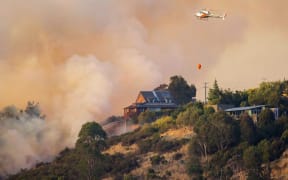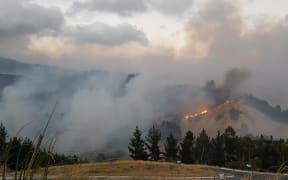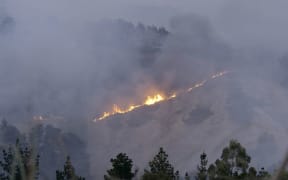Nearly one year on from Christchurch's Port Hills Fires, an ecologist says some native species may struggle to regrow on the fire damaged land, but there are positive signs of regeneration.
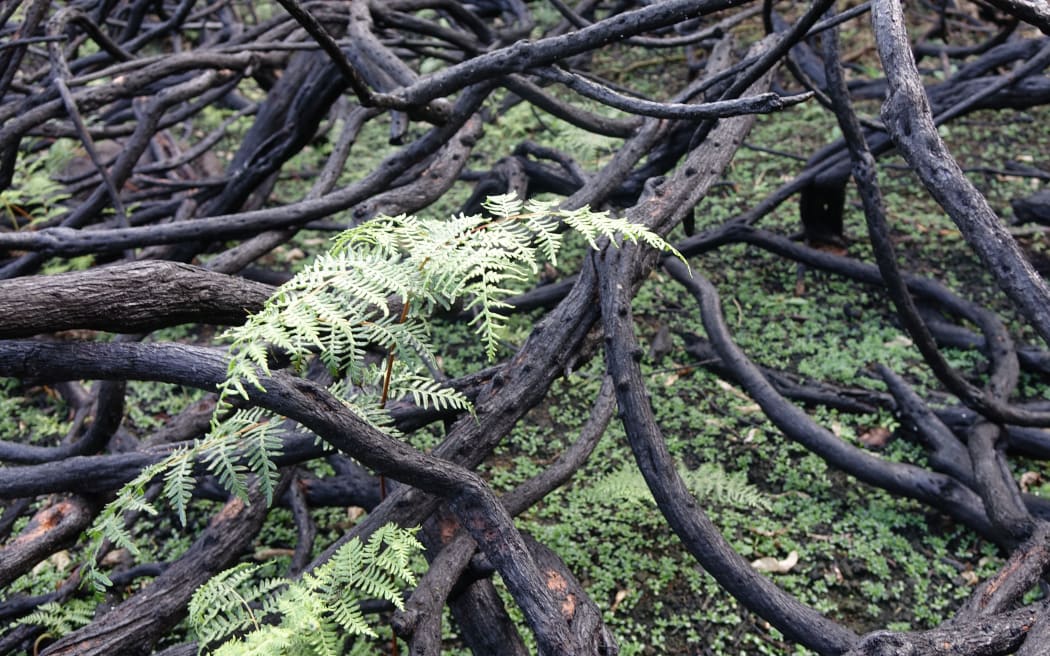
Native bracken fern growing through burnt gorse in Ohinetahi Reserve Photo: RNZ / Maja Burry
The two blazes started on 13 February last year and burned uncontrolled through nearly 2000 hectares of land.
Nine homes were destroyed and hundreds of hectares of native bush were badly damaged.
One year on the scar the blaze has left in the area is still visible, made up of the blackened skeletons of trees and charred remnants of other vegetation.
Over the last 12 months volunteers have been replacing the thousands of plants destroyed in the blaze, and researchers have been monitoring the recovery of the area.
University of Canterbury ecologist David Norton said much of the land affected by the fires was privately owned, including several reserves, as well as voluntary covenants and farmland.
The damage caused by the fire was catastrophic, he said.
"We have lost a lot, and some things we have lost totally, so things like kānuka, have not resprouted at all.
"[But] we're seeing a lot of regeneration, some of the plants around us... cabbage trees, harakeke - the New Zealand flax - mahoe, coprosma... They're certainly resprouting and some of them will recover, but it will take decades."
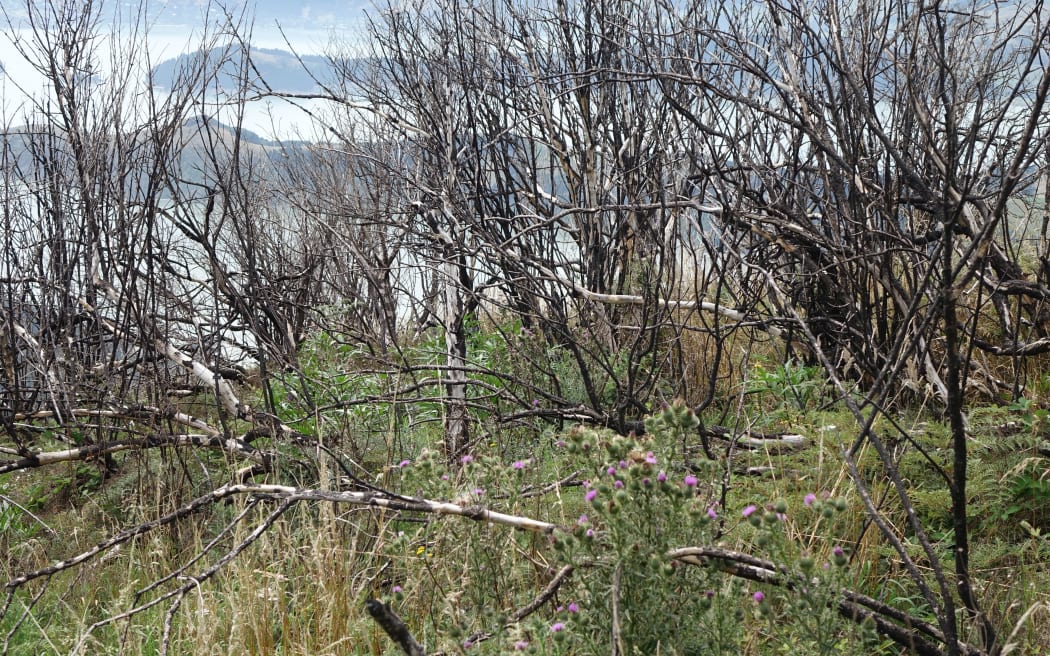
Port Hills one year on from the devastating fires. Photo: RNZ / Maja Burry
Canterbury University researcher and PhD student Ana Teixeira has set up 10 plots across the fire damaged hills, so she could monitor the re-growth of plant species.
The changes in the landscape over the year have already been significant, Ms Texiera said.
"It's quite exciting because the first times I came to [the Port Hills], the landscape was just completely black, burned and destoryed and now I can already see plants coming up, regenerating."
By monitoring growth she would be able to better understand how different plant species were affected by fire.
At the moment the exotic species were recovering faster than natives, she said.
"With time I guess more natives will come back, but there's a trend that gorse will certainly dominate a huge amount of area, after this burn event."
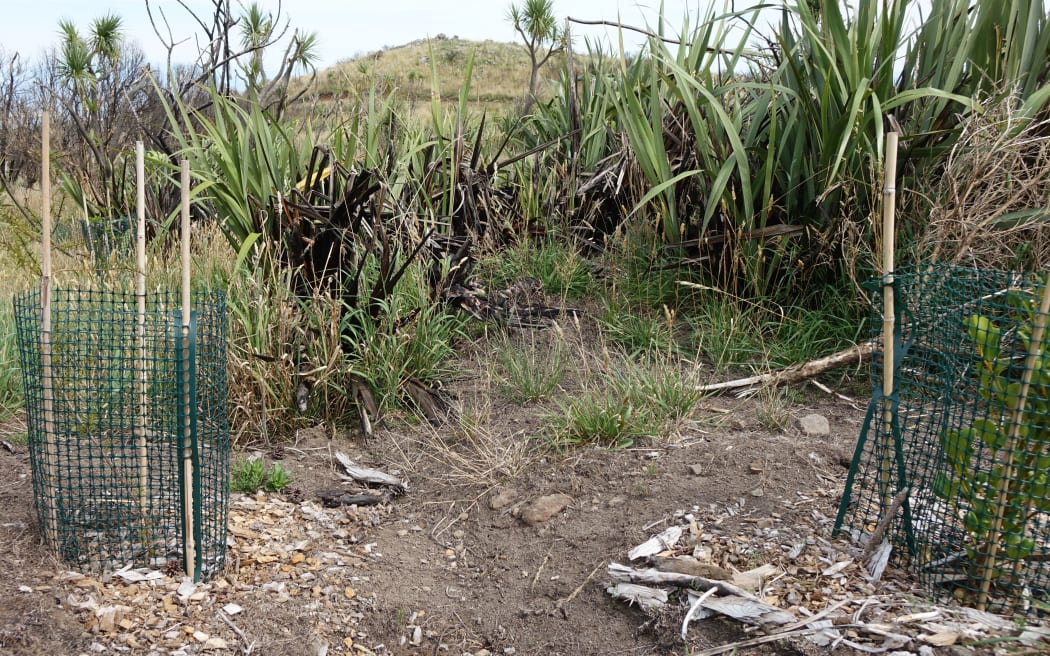
Volunteers have been planting in fire damaged areas of Port Hills. Photo: RNZ / Maja Burry
Christchurch City Council's Port Hills ranger, Di Cater, said four public reserves were damaged in the fires.
Since then about 1200 plants had been planted in those areas- about half of which are trees.
The council held 12 public planting days over the year, which collectively drew in nearly a thousand people.
"We lost 6500 planted trees to the fire, and over winter with those 12 planting we planted back 7200," Ms Carter said.
"We're kind of back to where we were [pre-fire] but just a bit behind in time."
The council had chosen to plant some vegetation that was known to be less fire-prone, she said.
Recovery efforts would continue into 2018, with another 11,000 plants expected to be planted on the Port Hills this year.

